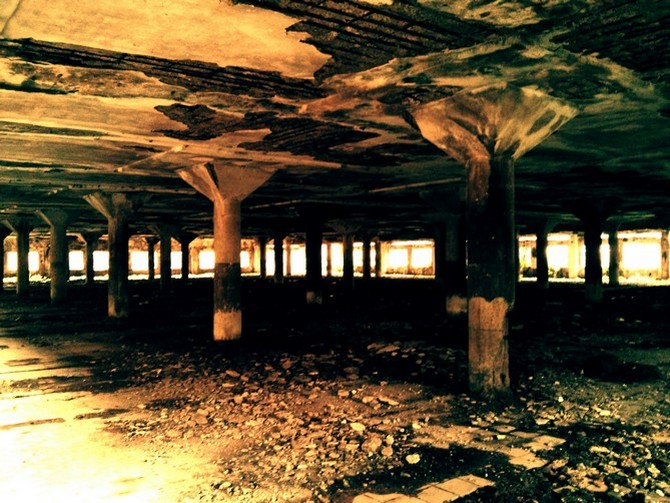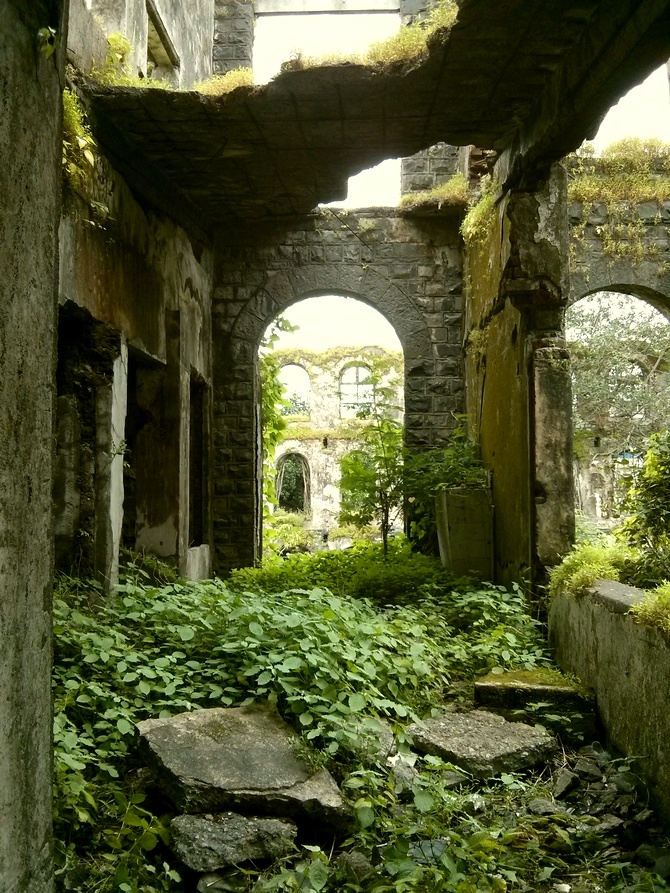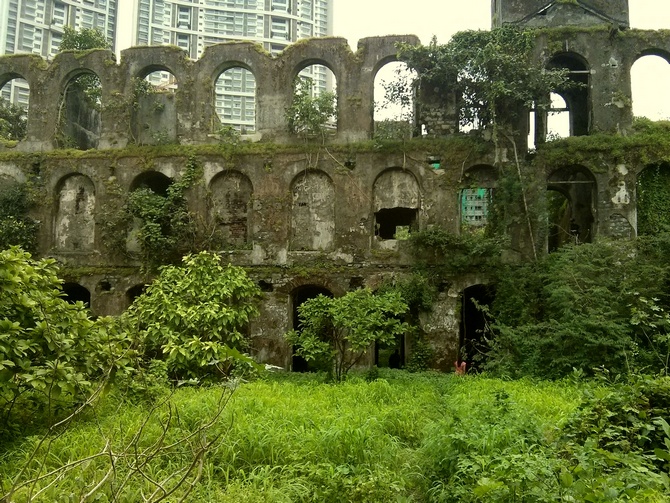
The ruins of Shakti Mills are a hauntingly beautiful place. On the evening of August 22, they were a silent witness to one of the most horrific episodes in Mumbai's history.
The remains of Shakti Textile Mills have been a silent testimony to Mumbai's history. Its thick walls that rise up a few hundred feet from the ground, its majestic arches and the imposing chimney, reveal not just its own glorious past but also that of the city itself.
Most parts of the mill are now crumbling. Vegetation covers what must have once been a busy shop floor. Climb two flights of stairs and you are looking into a sprawling pillared hall that seems almost Chernobyl-esque as it stands abandoned in a property that has been under litigation for as long as locals remember. It almost seems like a fortress fallen on bad times and you really have to catch yourself from getting lost in the maze.
The mills were part of the thriving textile district that earned Mumbai the moniker of the Manchester of the East. Today, the ruins stand a stone's throw away from the Mahalaxmi railway station in central Mumbai and just around the corner from Mumbai's commercial and shopping district of Lower Parel.
Shakti Mills is a hauntingly beautiful place, one that has stood solemnly as the city around it changed more rapidly than anyone had imagined.
...

On the evening of August 22, the ruins of Shakti Mills were a silent witness to a horrible episode in the city's history. Around 6 pm, five men raped a 23-year-old photojournalist who was photographing the ruins while they thrashed her male colleague who had accompanied her on the assignment.
That it should have happened in a mill named after Shakti or the divine feminine power in Hindu mythology is but a small irony.
The events of August 22 also shattered the misconception that most Mumbaikars seem to have -- that it is one of the safest cities in the country. After the gruesome Delhi rape last year, 'such things can never happen in Mumbai' wasn't an uncommon refrain. Perhaps, we spoke too soon.
Even as the city rose up in support of the young lady, a quiet unease settled upon the Shakti Mills lane.
SEE: Shocked and outraged Mumbai raises its voice against rape
READ: Mumbai is NOT a safe city
...

The sole chai stall along the road had been shut, presumably by the police while the few mechanic shops next to it continued to function almost half-heartedly. Conversations were being held in hushed tones. Many young men who frequented the lane had been rounded up by the police the previous evening and no one wanted any more trouble.
A pot-bellied man wearing a red vest and a shirt that barely covered his large torso broke the silence. He strolled towards us and without any invitation began to rattle out names of the men who were taken away by the police -- he was one of them.
"Gali galoch mein hi baat kartey hai… (They only speak to you in abuses…)" he said sounding frustrated and went on to narrate about the time when police cars came around and picked him and his neighbours up. "Woh ladki ko bhi idhar hi aana tha!? (Why did that girl have to show up here!?)"
...

The girl.
Foreigner thi (She was a foreigner): Raju Deshmukh, ragpicker
Boyfriend ke saath thi (She was with her boyfriend): Santosh Naik, sandwich stall owner
Train waley rastey sey aayi thi (She came to the mill crossing the railway tracks): Jaiswal, social worker.
These are men along the Shakti Mills lane, almost suggesting as if being a foreigner or with a boy or crossing the railway tracks justified what happened to the 23-year-old reporter.
This was the reaction of a policeman in civilian clothes who refused to be identified: "She came to take pictures of this?!?" he scoffed as he walked away.
"But why did she have to go to a deserted place to take pictures?" Mohammed Yusuf asked us in Hindi as we settled into his taxi before launching off on a rant about women and their dressing. "They wear those jeans and short dresses. Men have their weaknesses… we are bound to slip."
Another cabbie looked at me with disgust. "Women are not supposed to work," he said forcefully. "I don't get why they must go out."
These were some of the reactions I got on Mumbai streets a little over 24 hours after the horrific act took place. It isn't surprising that two of the women I approached simply refused to talk at first as I approached them.
...

The two ladies who preferred to remain unidentified work in the Shakti Mills lane and have been taking the same road every day for many years now. "It is scary," one of them confessed. "You always thought Mumbai was safe. It isn't. This happened in daylight. Sometimes you wonder if it is safe to even get out of the house!"
This, as some would say, is 'real India' -- men who believe that it is wrong for women to dress a certain way, wrong for them to go out and earn their bread and butter and of course photograph dilapidated mills.
Back at the mill, a couple of young journalists are trying to find a spot to set up their camera. Most others have left for the protest rally being held at Hutatma Chowk. After a full night and half a day of action, Shakti Mills has gone back to its original state of being.
Inside, a dog wanders amongst its environs, empty packets of chips and broken beer bottles lie scattered. Outside, the city resumes its business… as it always does.